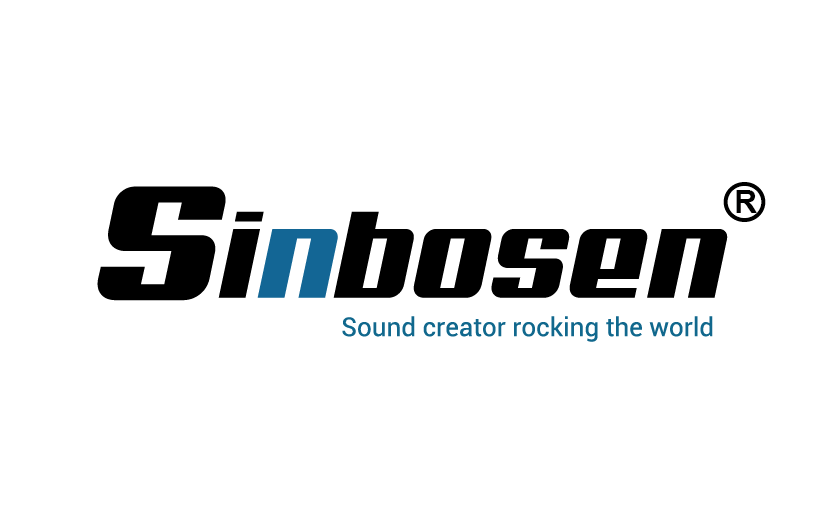Line Array Speaker Technology Explained
As someone who appreciates clear and powerful sound, I'm excited to dive into the world of line array speakers, especially those self-powered models perfect for live events and large venues. Join me as we explore how these impressive Line Array Speakers deliver exceptional audio quality and learn what makes them a crucial component for any professional audio setup.
Key Takeaways
- Self-Powered vs. Passive: Self-powered (active) line arrays have built-in amplifiers, simplifying setup and ensuring optimal component matching. Passive systems require external amplifiers, offering more customization but also more complexity.
- Core Benefits of Active Systems: The main advantages include faster setup, consistent audio quality due to integrated amplification, precise control via built-in Digital Signal Processing (DSP), and enhanced portability.
- Potential Drawbacks: Active speakers are individually heavier, which can impact rigging. Maintenance can be more complex since a failed amplifier requires servicing the entire speaker unit, and there are limitations on amplifier choices and potential thermal issues.
- Key Selection Criteria: When choosing a system, you must consider the venue size, event type, and desired coverage area. Pay close attention to technical specifications like maximum SPL (loudness), frequency response (tonal range), and DSP capabilities.
- DSP is a Game-Changer: Modern active line arrays leverage DSP for real-time adjustments, including equalization, crossover management, and system protection, allowing sound engineers to tailor the audio perfectly to any environment.
Understanding the Benefits of Self-Powered Line Array Speakers for Large Venues
In the world of professional audio, especially for concert halls, houses of worship, and outdoor festivals, self-powered line array speakers have become a dominant force. They offer a host of practical advantages over their passive counterparts, streamlining everything from setup to sound optimization. These "active" systems integrate amplifiers directly into the speaker cabinets, creating an all-in-one solution that revolutionizes how we deliver sound to large audiences.
Simplified Setup and Wiring with Self-Powered Line Array Speakers
One of the most significant advantages of self-powered line arrays is the dramatic simplification of system setup. In a traditional passive system, technicians must manage heavy racks of external amplifiers and run thick, multi-conductor speaker cables to each cabinet. This process is not only time-consuming but also introduces multiple points of potential failure.
Active line arrays eliminate this complexity entirely. Since each speaker has its own built-in amplifier, the need for external amp racks is gone. Setup involves running just two cables to each speaker cabinet: one for the audio signal (typically a standard XLR or a digital audio network cable like Dante) and one for AC power. This "plug-and-play" approach drastically reduces cabling clutter, minimizes setup time, and lowers the chance of wiring errors. For touring productions and corporate events with tight schedules, this efficiency is invaluable.

Achieving Consistent Audio Quality with Integrated Amplification in Line Array Systems
With a self-powered line array, the manufacturer has done the critical work of matching the amplifier to the speaker drivers (woofers, mid-range drivers, and tweeters). This integration is a huge benefit for audio quality. The built-in amplifier is perfectly tuned to the power handling capabilities and impedance characteristics of the drivers within that specific cabinet.
This factory-matched synergy ensures several key outcomes:
- Optimal Performance: The drivers receive exactly the right amount of power, allowing them to perform at their peak efficiency without risk of damage.
- Prevents Mismatches: In passive systems, it's possible to underpower speakers (leading to a weak, distorted signal) or overpower them (risking permanent damage). Active systems eliminate this guesswork.
- Consistent Voicing: Because every speaker in the array uses the identical, factory-tuned amplification and processing, the entire system has a consistent tonal character. This makes it much easier to achieve a balanced, coherent sound field across the entire venue. The audio experience remains uniform, whether an audience member is in the front row or the back.
Precision Control and Customization through DSP in Modern Line Array Speakers
Perhaps the most powerful feature of modern active line arrays is the integrated Digital Signal Processing (DSP). The DSP is the "brain" of the speaker, a dedicated microchip that processes the audio signal in real-time before it's amplified. This opens up a world of control and customization that is difficult and expensive to achieve with passive systems.
Through software—often controlled wirelessly from a laptop or tablet—engineers can make precise adjustments to the speaker's performance. This allows for meticulous tailoring of the sound to suit the specific acoustics of a venue and the needs of the event.
Here are some of the critical functions managed by DSP:
| DSP Function | Description | Benefit |
|---|---|---|
| Crossover Management | The DSP acts as an advanced crossover, precisely dividing the audio signal and sending the correct frequency bands to the woofers, mid-range drivers, and tweeters. | Ensures a smooth, seamless transition between drivers for a natural and clear sound. |
| Equalization (EQ) | Allows for detailed frequency adjustments to correct for room acoustics (e.g., reducing a booming frequency in a reverberant hall) or to shape the tone for artistic reasons. | Achieves a balanced and pleasant sound, compensating for environmental challenges and tailoring the audio to the source material. |
| Time Alignment | In a large array, the DSP can apply tiny delays to individual speakers, ensuring that the sound from all cabinets arrives at the listener's ear at the exact same moment. | Creates a coherent and focused sound image, dramatically improving clarity and impact. |
| Limiting/Protection | The DSP constantly monitors the signal and can apply subtle, inaudible limiting to prevent the amplifier from clipping and protect the drivers from damaging power spikes. | Increases system reliability and longevity by safeguarding components from overload. |
| Speaker Voicing/Presets | Many systems come with factory presets optimized for different applications, such as "Speech," "Live Music," or for use as a floor monitor. | Provides quick and effective starting points for tuning the system, speeding up the workflow. |
This level of integrated control makes it possible to optimize a sound system with a degree of precision and efficiency that was once unimaginable.
Enhanced Portability and Flexibility of Self-Powered Line Array Speakers
The all-in-one design of self-powered line arrays is a significant boon for portability, especially for rental companies and touring acts that are constantly on the move. By eliminating the need for separate, heavy amplifier racks, the overall volume and weight of the entire sound system are reduced, saving valuable space in the truck.
While individual active cabinets are heavier than their passive counterparts, the total system weight is often comparable or even less once you factor in the bulky, heavy-duty racks and thick copper cabling required for a passive setup.
This modular, self-contained approach also enhances flexibility.
- Scalability: Systems can be easily scaled up or down. For a smaller gig, you might use just a few cabinets per side. For a large festival, you can add more boxes to the array to increase coverage and SPL, all without having to recalculate amplifier loads.
- Versatility: Many powered line array elements are designed for multiple uses. The same speaker that forms part of a large flown array for a concert can often be used individually as a front fill, or pole-mounted over a subwoofer for a smaller corporate event. This multi-purpose capability makes them a highly flexible investment.
Long-Term Cost Savings: The Economic Advantage of Self-Powered Line Array Speakers
While self-powered line array speakers often have a higher initial purchase price per cabinet, they can lead to significant long-term cost savings when considering the total cost of ownership. Passive systems may seem cheaper upfront, but the budget must account for numerous additional components.
Here's how the costs break down over the life of the system:
- No External Amplifiers: The most obvious saving is the elimination of expensive, high-power amplifier racks. For a large passive system, the cost of quality amplifiers can be substantial.
- Reduced Cabling Costs: Active systems use standard, relatively inexpensive signal cables (like XLR) and power cords. Passive systems require very thick, heavy, and costly multi-core speaker cables to minimize power loss over long distances.
- Lower Labor and Transport Costs: Faster setup and teardown times directly translate to lower labor costs for technicians. Reduced system weight and volume can also lead to savings in transportation and logistics for touring productions.
- Integrated Processing: Since DSP is built-in, there's no need to purchase separate loudspeaker management systems, which are a necessary expense for properly tuning a professional passive array.
When all these factors are combined, the total cost of ownership for a self-powered system is often more economical than a comparable passive setup, especially for businesses that value efficiency and quick deployment.
Exploring the Drawbacks of Active Line Array Speakers in Live Sound Applications
Despite their numerous benefits, active line array speakers are not without their drawbacks. The integrated design, while convenient, introduces a unique set of challenges that are important considerations for any audio professional, especially in demanding live sound environments. These systems offer immense power and clarity, but it's crucial to understand the trade-offs involved.
Increased Weight and Maintenance Complexity of Active Line Array Speakers
The most immediate and noticeable drawback of active line array speakers is the weight. Because each cabinet must house not only the speaker drivers but also a power amplifier, power supply, and heat sinks, it is inherently heavier than a comparable passive box. This additional weight has direct implications for rigging and transportation. Heavier boxes may require more robust rigging points, stronger trussing, and more manpower to fly, potentially increasing the structural requirements and costs for a venue or tour.
Maintenance also becomes more complex. In a passive system, if an amplifier fails, it's a relatively simple matter of swapping out the faulty unit from a rack on the ground. However, if the amplifier module in an active speaker fails, the entire speaker cabinet—which could be suspended high above a stage—must be taken down for repair. This process can be far more disruptive and time-consuming, especially if a failure occurs during a soundcheck or, in a worst-case scenario, a show. It centralizes the points of failure; a problem with the electronics takes the entire speaker out of commission.
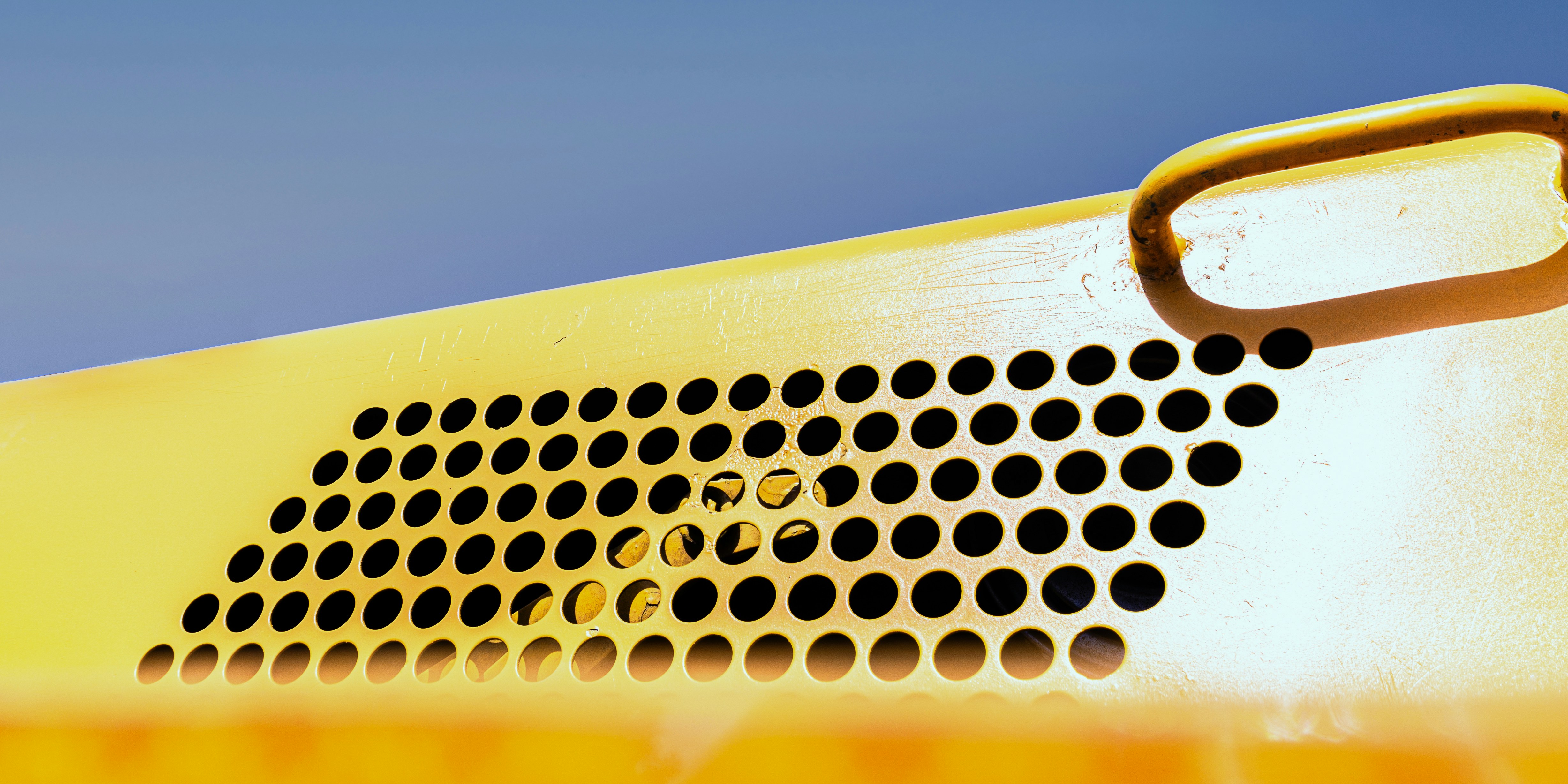
Limitations in Amplifier Choices and Potential Thermal Issues in Integrated Line Array Systems
While the integrated nature of active speakers offers consistency, it also introduces significant limitations. In a passive system, an audio professional has the freedom to choose, upgrade, or swap out amplifiers to match their specific preferences or the demands of a particular event. With a self-powered speaker, you are permanently locked into the amplifier that the manufacturer built into the cabinet. You cannot upgrade it for a more powerful or higher-fidelity model down the line. This lack of modularity can be a major drawback for rental companies or venues that want the flexibility to evolve their systems over time.
Another critical concern is heat. Amplifiers generate a significant amount of heat during operation. In a passive system, amps are stored in well-ventilated racks, often with dedicated cooling fans, keeping them at a safe operating temperature. In an active speaker, the amplifier is housed inside a sealed, vibrating speaker cabinet, which is a far from ideal thermal environment.
When active arrays are used outdoors in direct sunlight, the black cabinets can absorb a tremendous amount of solar heat, further increasing the internal temperature. If the amplifier's heat sink cannot dissipate heat effectively, the amplifier can overheat. This can lead to:
- Thermal Protection: The amplifier may automatically reduce its output power or shut down completely to prevent damage.
- Power Compression: As the speaker's voice coils heat up, their electrical resistance increases, causing a reduction in output level even if the input signal remains the same.
- Component Failure: Sustained high temperatures can reduce the lifespan of electronic components and lead to premature failure.
Understanding the Power Requirements for Active Line Array Speakers
While active speakers simplify signal cabling, they complicate power distribution. A passive system centralizes power needs at the amplifier rack, which can be connected to a single high-amperage power distribution unit. An active system, however, requires an individual AC power outlet for every single speaker in the array.
For a large-scale system with eight or more cabinets per side, plus subwoofers and stage monitors, this means running dozens of power cables. Planning and managing this power distribution can be a significant logistical challenge.
- Cable Management: Running separate power lines to each flown speaker can be cumbersome and create a visually messy setup if not managed carefully.
- Circuit Capacity: Technicians must be careful to distribute the load across multiple electrical circuits to avoid overloading breakers. The current draw of each speaker must be calculated, and the total load on any single circuit must remain within safe limits—typically 80% of the breaker's rating.
- Grounding and Noise: Improper power distribution can sometimes lead to ground loops, which can introduce unwanted hum and noise into the audio system, a problem that can be difficult to diagnose and solve under pressure.
Careful planning with stage plots and power distribution schematics becomes essential to ensure that every component receives clean, reliable power without risking electrical faults.
Top Active Line Array Speakers: My Selections for Clarity and Versatility
Navigating the market for active line array speakers can be overwhelming. To help, I've compiled a list of my top selections based on years of experience and industry reputation. These models stand out for their exceptional sound quality, reliability, innovative features, and versatility across a range of applications, from intimate corporate events to large-scale concert productions.
Meyer Sound LINA: A Compact Powerhouse in Line Array Speaker Technology
Meyer Sound has a legendary reputation for a reason, and the LINA compact line array loudspeaker is a perfect example of their engineering prowess. Despite its incredibly small and lightweight form factor, LINA delivers a level of clarity and power that defies its size, making it an ideal choice for small-to-medium-sized venues, theaters, houses of worship, and corporate AV.
One of LINA's most lauded characteristics is its exceptional high-frequency headroom and intelligibility. It reproduces audio with astonishing fidelity and minimal distortion, even at high volumes. Its native integration with Meyer Sound's ecosystem, including the 750-LFC low-frequency control element and Galileo GALAXY loudspeaker management system, allows for the creation of a truly seamless and powerful full-range system.
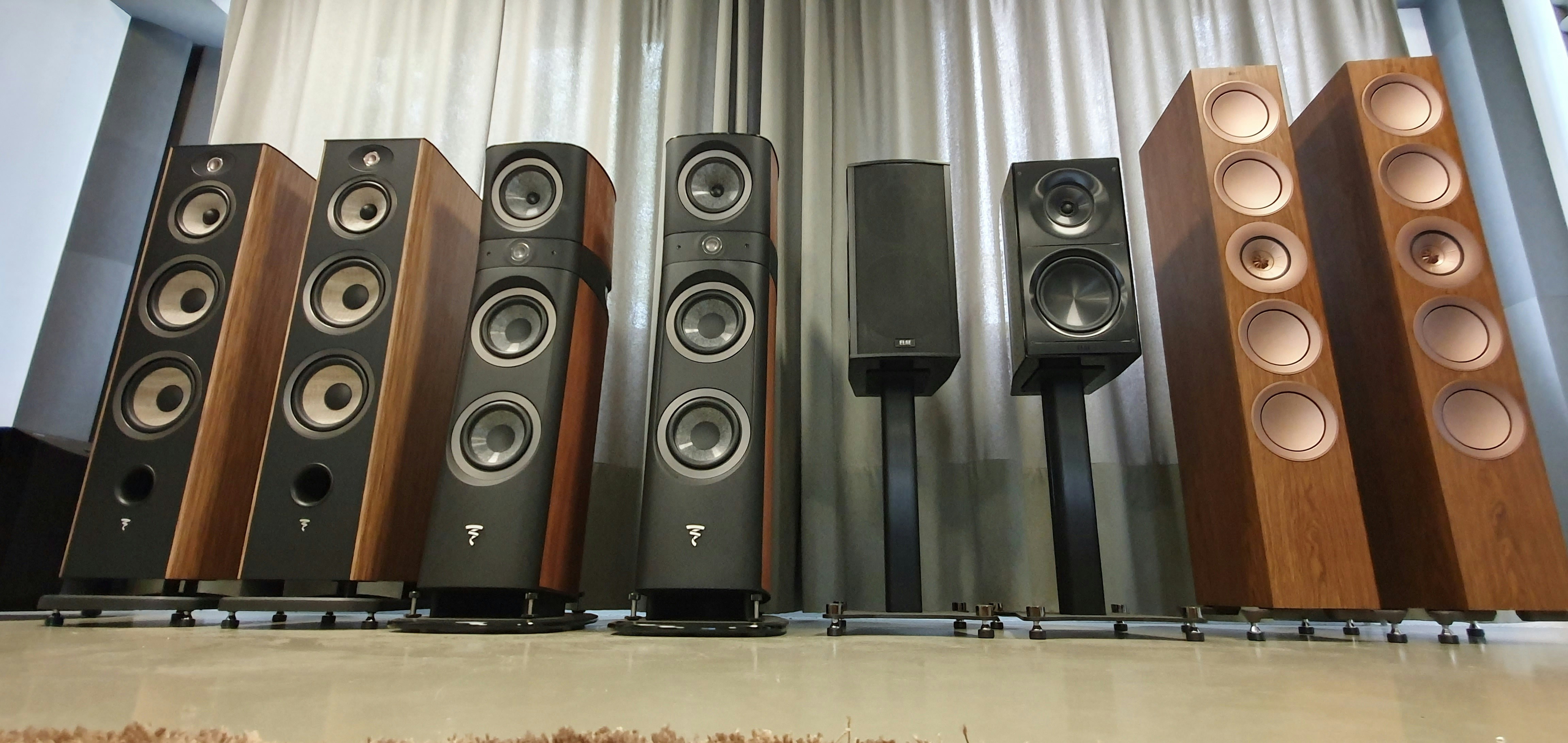
| Specification | Meyer Sound LINA |
|---|---|
| Speaker Type | Two-way Active Line Array Element |
| LF Drivers | 2 x 6.5" Long-Excursion Cones |
| HF Driver | 1 x 3" Compression Driver |
| Frequency Range | 65 Hz – 18 kHz |
| Maximum Peak SPL | 138 dB. |
| Horizontal Coverage | 100° |
| Weight | 43 lbs / 19.5 kg |
| Key Features | Self-powered, Class-D amplification, exceptional power-to-size ratio, QuickFly rigging with GuideALinks. |
The LINA's design makes it exceptionally versatile. It can be used in vertical arrays for main PA duties, as single cabinets or short stacks for front-fill and under-balcony coverage, or as a supplemental fill speaker for larger Meyer Sound LEOPARD systems.
RCF HDL20-A: A Popular Choice for High-Quality Sound and User-Friendly Rigging in Line Array Speakers
The RCF HDL20-A has earned its place as one of the most popular and trusted active line array modules on the market, especially for rental companies and touring acts. It strikes an excellent balance between powerful performance, compact size, and an intuitive, fast rigging system. This makes it an ideal workhorse for live sound reinforcement in a wide variety of indoor and outdoor settings.
Powered by a 1400W peak Class-D amplifier, the HDL20-A utilizes two 10-inch woofers and a large-format 3-inch voice coil compression driver. A key design feature is the 800Hz crossover point, which allows the compression driver to handle nearly the entire vocal range. This results in exceptional vocal clarity and intelligibility, even at a distance. The onboard DSP provides presets for different scenarios, including corrections for array size and high-frequency throw.
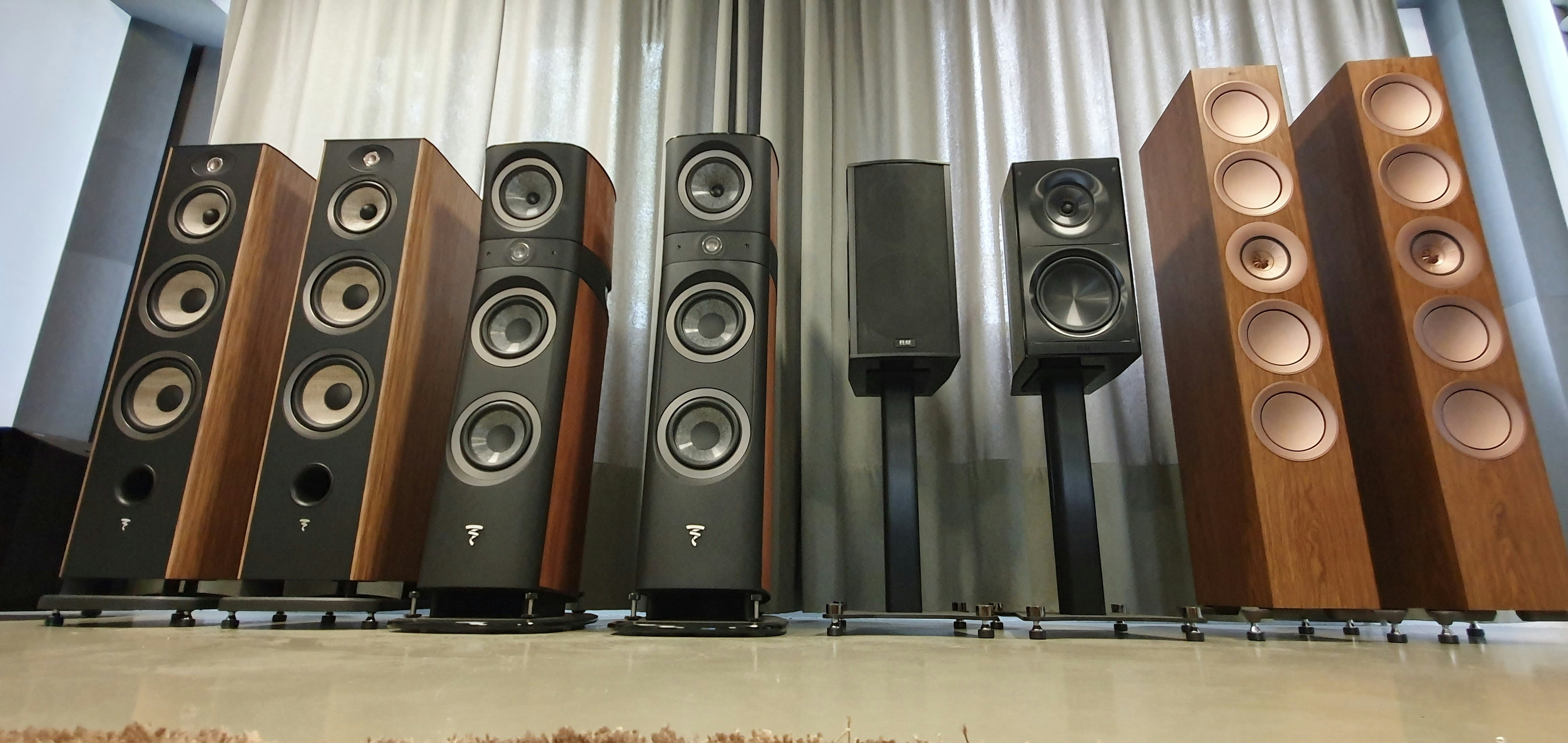
| Specification | RCF HDL20-A |
|---|---|
| Speaker Type | Two-way Active Line Array Module |
| LF Drivers | 2 x 10" Woofers with 2.5" voice coil |
| HF Driver | 1 x 2" Compression Driver with 3" voice coil |
| Total Power | 700W RMS / 1400W Peak |
| Frequency Response | 55 Hz – 20,000 Hz. |
| Maximum Peak SPL | 135 dB. |
| Horizontal Coverage | 100° |
| Vertical Coverage | 15° (per module). |
| Weight | 66.58 lbs / 30.2 kg. |
| Key Features | DSP controlled with presets, structurally reinforced composite polypropylene enclosure, fast rigging hardware. |
The cabinet is built from a wood-reinforced composite material, making it both durable enough for the road and acoustically dampened to reduce vibrations. Technicians frequently praise the HDL20-A for its fast and easy setup, which is a critical factor for events with tight schedules.
dBTechnologies VIO L210: Combining Lightweight Design with Exceptional Performance in Line Array Speakers
dBTechnologies has made a significant impact on the pro audio market with its VIO series, and the L210 is a standout model. It is highly regarded for delivering exceptional clarity and powerful output while maintaining a surprisingly lightweight and compact profile. This combination makes it an excellent choice for a wide range of applications, from theaters and corporate events to medium-sized festivals and houses of worship.
The VIO L210 features an advanced acoustic design, including two 10-inch neodymium woofers in a V-formation and a 1.4-inch titanium compression driver. The system is powered by a 900W RMS Digipro G3 Class-D amplifier and utilizes advanced DSP with linear phase FIR filters. This technology ensures a remarkably coherent and intelligible audio performance with a flat phase response, which is crucial for clarity over long distances. The built-in RDNet port allows for real-time remote control and monitoring of the entire system.
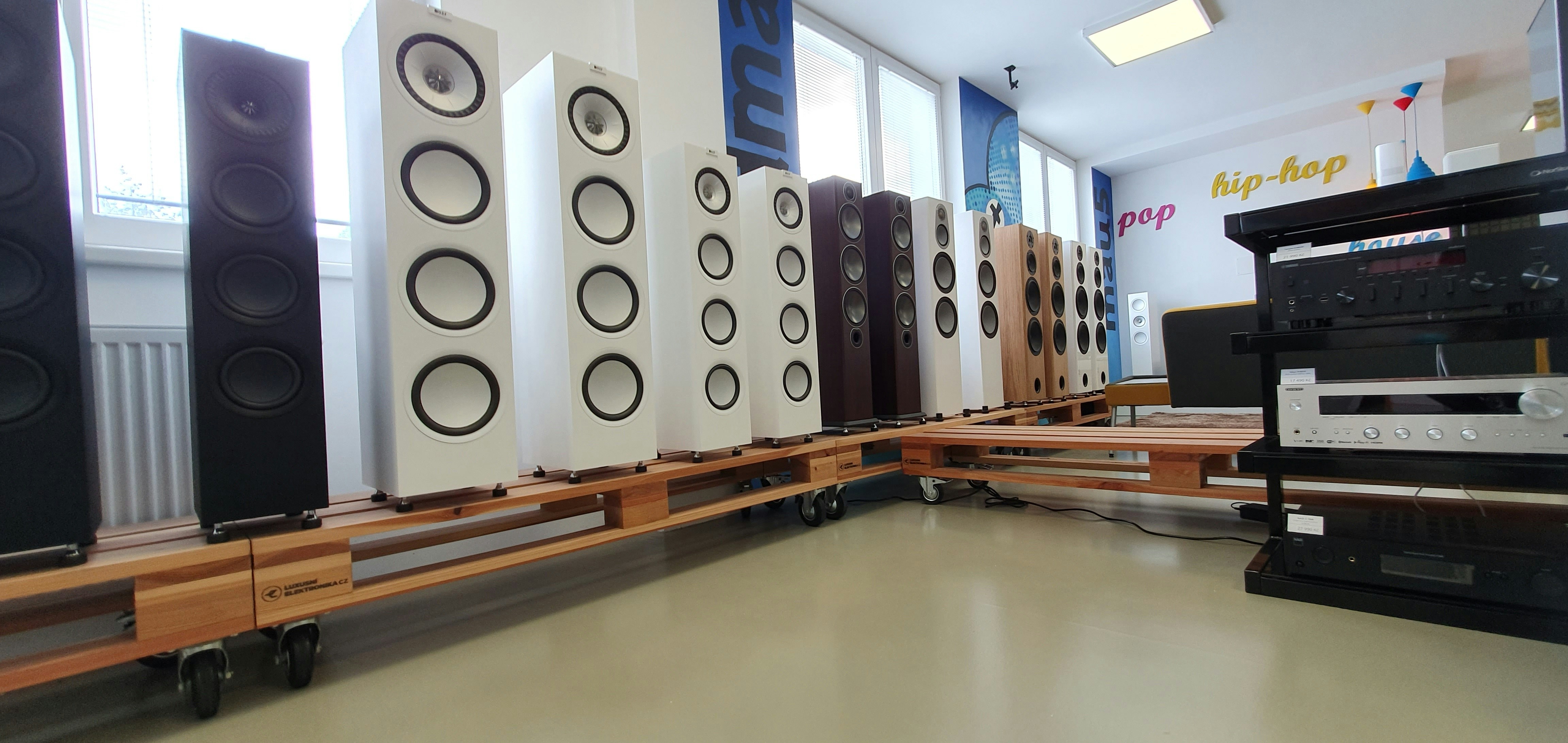
| Specification | dBTechnologies VIO L210 |
|---|---|
| Speaker Type | 2-Way Active Line Array Module |
| LF Drivers | 2 x 10" Neodymium Woofers |
| HF Driver | 1 x 1.4" Neodymium Titanium Compression Driver |
| Total Power | 900W RMS / 1800W Peak |
| Frequency Response | 78 Hz – 18,100 Hz (+/- 3dB). |
| Maximum SPL | 135 dB. |
| Horizontal Coverage | 100° |
| Weight | 63 lbs / 28.6 kg. |
| Key Features | Digipro G3 Class-D Amplifier, Linear Phase FIR Filters, RDNet remote control, integrated 3-point rigging system. |
The VIO L210 is also praised for its smart and efficient rigging hardware. The integrated 3-point system is designed for fast and smooth setup, with a hook-type link that allows splay angles to be set quickly while the modules are still on the ground or cart. This user-friendly feature significantly speeds up deployment, a critical benefit for touring and rental applications.
QSC KLA12: A Cost-Effective Line Array Solution with Excellent Sound and Coverage
QSC has a strong reputation for building reliable, high-performing, and user-friendly audio equipment, and the KLA12 active line array loudspeaker is no exception. It is widely recognized as a highly cost-effective solution that brings the power and coverage of a line array into a more accessible and easy-to-use package. It's an extremely popular choice for small-to-medium-sized venues, mobile DJs, and houses of worship.
The KLA12 features a 12-inch woofer and a 1.75-inch compression driver housed in a rugged, lightweight ABS enclosure. A key selling point is its "Lift, Click, and Play" design. The SOLO™ (Single-Operator Logistics) Rigging System allows for incredibly fast deployment without any special tools or hardware. Another innovative feature is the Ar-Q™ (Arcuate Equalization) processing; a simple dial on the back of the speaker allows you to select the number of boxes in the array, and the DSP automatically applies the correct frequency compensation for a balanced tonal curve.
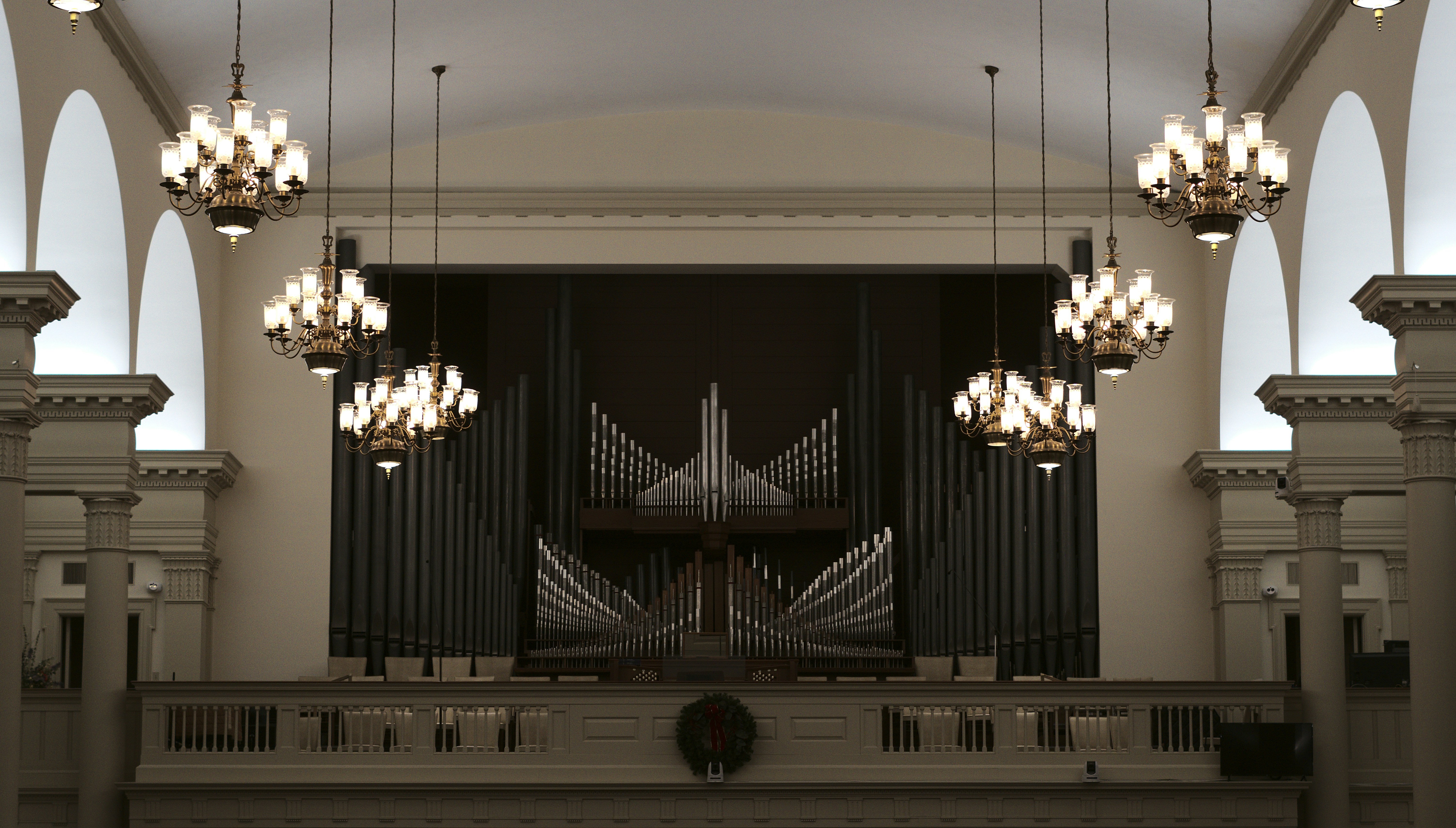
| Specification | QSC KLA12 |
|---|---|
| Speaker Type | 2-Way Active Line Array Loudspeaker |
| LF Driver | 1 x 12" Cone Transducer |
| HF Driver | 1 x 1.75" Compression Driver |
| Total Power | 500W + 500W Class-D |
| Frequency Response | 49 Hz – 18 kHz (-6 dB). |
| Maximum Peak SPL | 131 dB. |
| Horizontal Coverage | 90° |
| Vertical Coverage | 18° |
| Weight | 55 lbs / 25 kg. |
| Key Features | SOLO™ Rigging System, Ar-Q™ Frequency Optimization, DEEP™ DSP algorithm for extended bass, highly efficient power module. |
The power module is highly efficient, allowing up to five KLA models (including the matching KLA181 subwoofer) to be run off a single 15-amp, 120V circuit. This is a significant advantage for mobile applications where power may be limited. The built-in DEEP™ DSP algorithm provides extended bass response by actively managing low-frequency transients, allowing the KLA12 to deliver impressive low-end punch without needing a subwoofer for smaller applications.
JBL VRX932LAP: Versatility and Reliability in a Constant Curvature Line Array Speaker
The JBL VRX932LAP has been a staple in the pro audio industry for years, known for its reliability and unique design. It is a "constant curvature" line array, meaning each box is designed with a fixed 15-degree vertical splay. This simplifies the setup process, as there are no complex splay angles to calculate; you simply stack or fly the boxes to create a seamless, curved array. This makes it an excellent choice for portable PA systems, regional sound companies, and installations where ease of use is paramount.
The speaker is powered by a Crown-designed Drivepack® DPC-2 amplifier module, delivering 1750W of peak power. It features a 12-inch Differential Drive® woofer for high power handling with low weight, and a high-frequency section comprising three 1.5-inch annular ring diaphragm drivers. This unique multi-driver HF section, mounted on a constant curvature waveguide, is key to the system's ability to create a coherent arc of sound when multiple boxes are arrayed. An Array Configuration Selector switch on the back allows for "amplitude shading," which adjusts the output of boxes higher in the array to better cover distant seats while reducing the level for listeners closer to the stage.
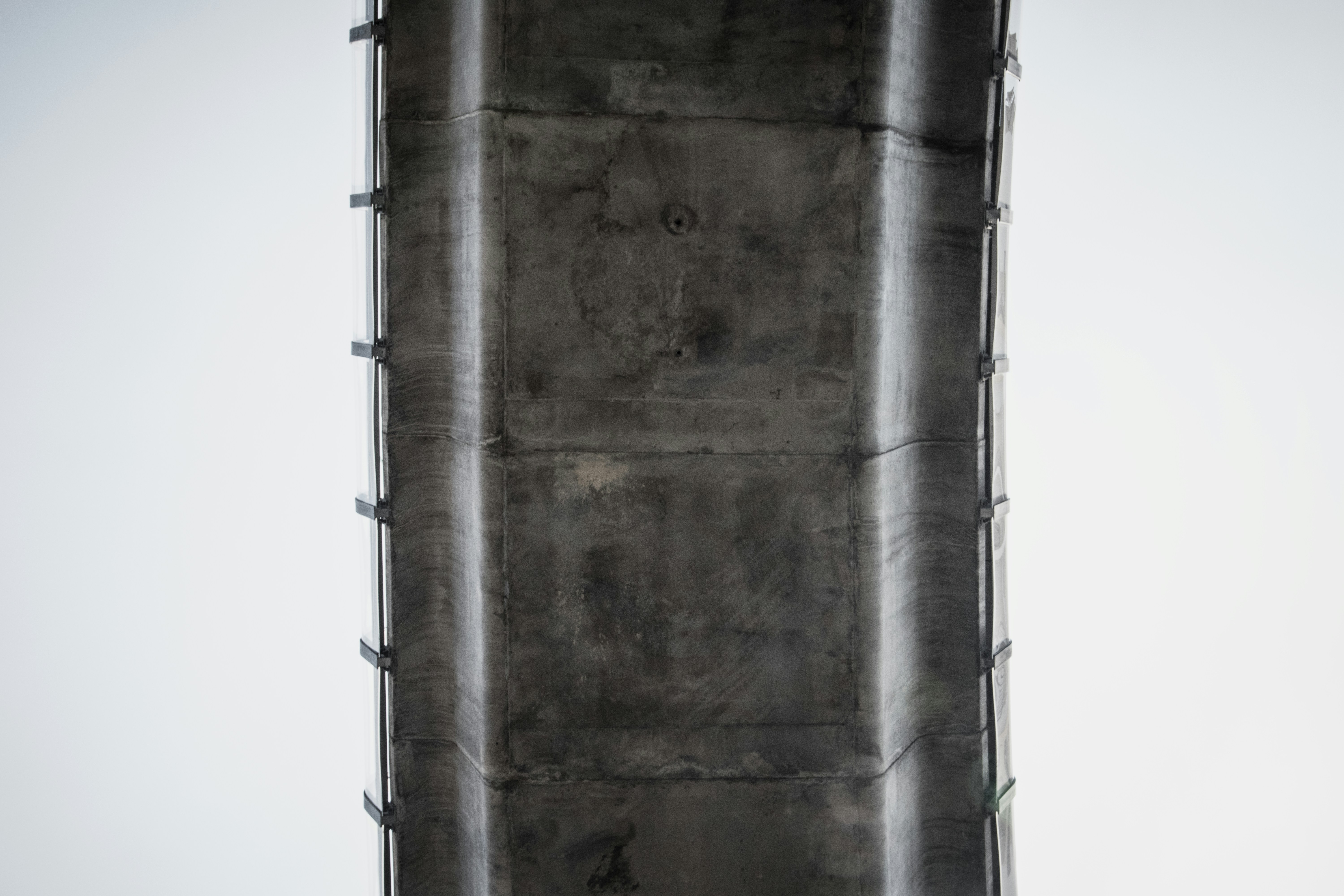
| Specification | JBL VRX932LAP |
|---|---|
| Speaker Type | Two-Way Active Constant Curvature Line Array |
| LF Driver | 1 x 12" 2262H Differential Drive® Woofer |
| HF Drivers | 3 x 1.5" 2408J Annular Ring Diaphragm Drivers |
| Total Power | 875W Continuous / 1750W Peak |
| Frequency Range | 57 Hz – 20 kHz (-10 dB). |
| Maximum Peak SPL | 136 dB. |
| Horizontal Coverage | 100° |
| Vertical Coverage | 15° (fixed per box). |
| Weight | 52 lbs / 24 kg. |
| Key Features | Crown Drivepack® DPC-2 amplifier, Constant Curvature waveguide, Array Configuration Selector, dual-angle pole socket. |
Its combination of JBL's legendary sound, Crown's reliable amplification, and a straightforward setup process has made the VRX932LAP a long-standing favorite for a wide range of sound reinforcement applications.
EAW Radius RSX208L: Compact Line Array Speakers Delivering Superb Clarity and Coverage
Eastern Acoustic Works (EAW) is a respected name in professional audio, and their RADIUS series is designed to deliver intelligent features and signature EAW sound. The RSX208L is a compact, 3-way self-powered line array module that is packed with smart technology to streamline setup and deliver pristine audio. It's a fantastic option for theaters, houses of worship, and live production companies.
A standout feature of the RADIUS series is OptiLogic™. This system uses onboard infrared sensors and accelerometers to automatically detect the array configuration and splay angles. This information allows for near-instant optimization of the system, including air loss compensation, saving a massive amount of time during setup and tuning. Control is handled via the EAWmosaic™ iOS app, which provides system prediction, control, and monitoring from anywhere in the venue. The system also features full Dante networking integration for digital audio transport.
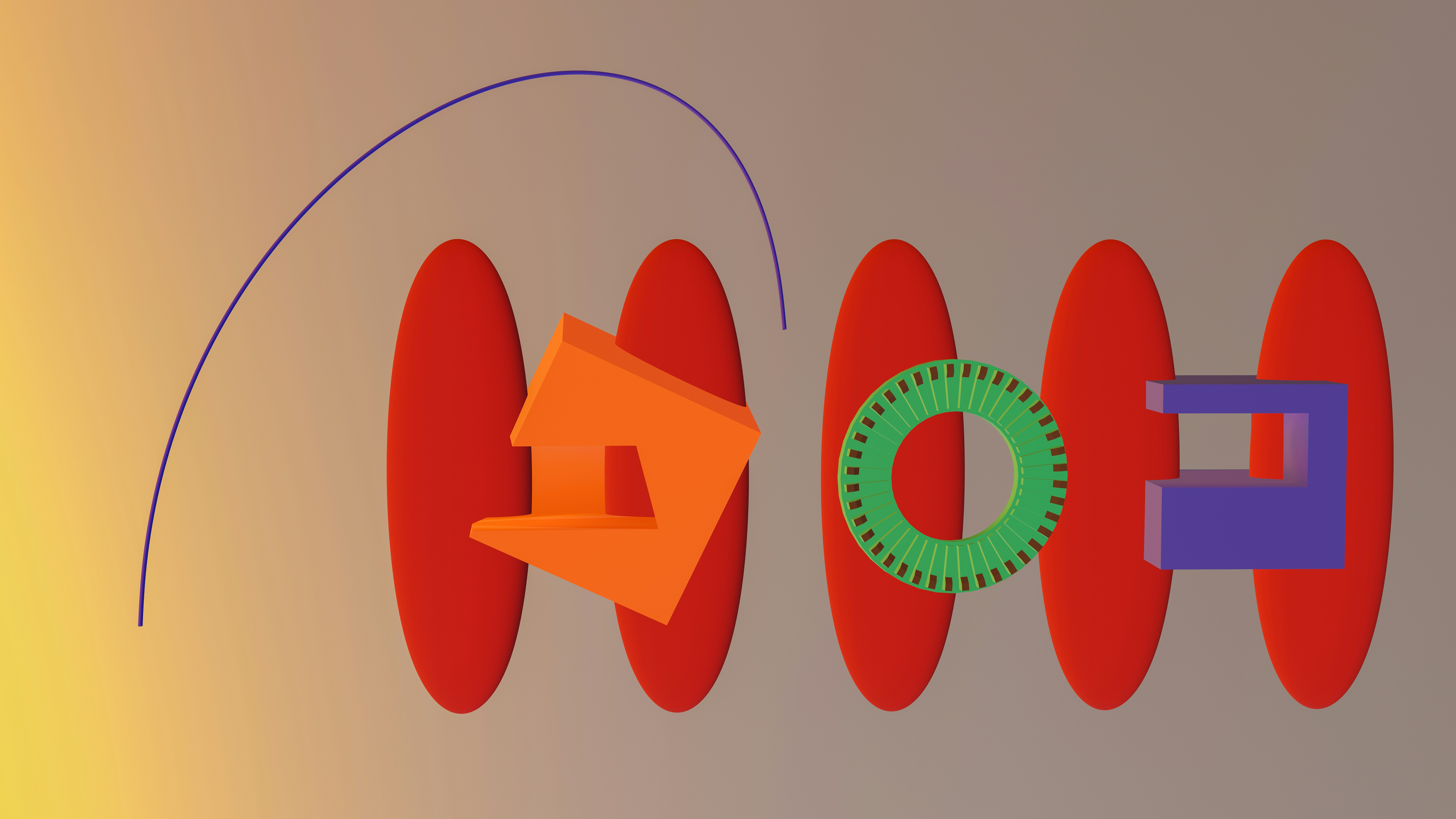
| Specification | EAW Radius RSX208L |
|---|---|
| Speaker Type | 3-Way Self-Powered Line Array Module |
| LF Drivers | 1 x 8" Cone, 2" voice coil |
| LF/MF Driver | 1 x 8" Cone, 2" voice coil |
| HF Drivers | 2 x 1" exit, 1.4" voice coil compression drivers |
| Total Power | 3 x 500W |
| Frequency Response | 70 Hz – 18 kHz. |
| Maximum SPL | 131 dB. |
| Horizontal Coverage | 120° |
| Weight | 40.5 lbs / 18.4 kg. |
| Key Features | OptiLogic™ array self-detection, EAWmosaic™ control app, Dante integration, Focusing™ and DynO™ DSP processing. |
Sonically, the RSX208L leverages EAW's advanced DSP, including Focusing™ and DynO™ algorithms. Focusing™ provides a pristine impulse response for maximum clarity, while DynO™ optimizes the power transfer from the amplifier to the transducers, resulting in improved headroom and punch at any volume level.
Meyer Sound LEOPARD: Compact Size and Outstanding Clarity for Large Venues with these Line Array Speakers
As part of Meyer Sound's flagship LEO family, the LEOPARD sets an incredibly high standard for compact line arrays. It is lauded for its astonishing power-to-size ratio and its ability to reproduce sound with exceptional linearity and transparency. LEOPARD delivers the sonic detail and impact of a much larger system, making it a top-tier choice for concert halls, theaters, large houses of worship, and high-end touring applications.
LEOPARD is engineered for linear response and extremely low distortion, ensuring that any source material—from delicate classical music to high-energy EDM—is reproduced with stunning clarity and depth across a wide dynamic range. At its core are two 9-inch long-excursion cone drivers and a 3-inch compression driver, powered by a highly efficient, multi-channel Class-D amplifier. The "Native Mode" preset provides a remarkably optimized response right out of the box, simplifying initial system setup.

| Specification | Meyer Sound LEOPARD |
|---|---|
| Speaker Type | Compact Linear Line Array Loudspeaker |
| LF Drivers | 2 x 9" Long-Excursion Cone Drivers |
| HF Driver | 1 x 3" Compression Driver |
| Amplifier | 3-Channel, Open-Loop, Class-D |
| Frequency Range | 55 Hz – 18 kHz. |
| Maximum Peak SPL | 142 dB. |
| Horizontal Coverage | 110° (Standard) or 80° (M80 variant). |
| Weight | 75 lbs / 34 kg. |
| Key Features | Self-powered, exceptional power-to-size ratio, Native Mode for quick optimization, pairs with 900-LFC subwoofer. |
The system's versatility is a key advantage. It's scalable for applications seating anywhere from a few hundred to several thousand people. For low-frequency reinforcement, it pairs seamlessly with Meyer's 900-LFC subwoofer, which can be flown in the same array without transition hardware. LEOPARD is also available in an M80 variant with a tighter 80° horizontal pattern, allowing system designers to precisely tailor coverage for long-throw applications or to avoid reflective surfaces.
Choosing the Right Active Line Array Speakers for Your Needs
Selecting the perfect active line array system is a critical decision that depends on a nuanced understanding of your specific requirements. There is no one-size-fits-all solution; the best choice for a touring rock band will be vastly different from what a corporate AV company or a permanent theater installation needs. A thoughtful evaluation of both the application and the technology will ensure you invest in a system that delivers exceptional results every time.
Factors to Consider When Selecting Line Array Speakers: Venue Size, Event Type, and Coverage
Before diving into specific models, you must first conduct a thorough analysis of your primary use case. The right system is one that is perfectly matched to its environment and purpose.
Venue Size and Audience Capacity
The physical dimensions of the space and the number of people you need to cover are the most fundamental factors.
- Small Venues (e.g., small clubs, conference rooms, houses of worship for <500 people): A compact line array system, perhaps with 2-4 modules per side, is often sufficient. In these spaces, the goal is clear, even coverage without overwhelming the audience. Systems with wider horizontal dispersion (100°-120°) are often beneficial to cover the broad seating areas up close.
- Medium Venues (e.g., theaters, auditoriums, larger churches for 500-2000 people): A more substantial array of 4-8 modules per side might be necessary. Here, the "throw" (the distance the sound needs to travel) becomes more critical. You'll need a system with enough power and projection to reach the back rows with clarity.
- Large Venues (e.g., arenas, outdoor festivals for >2000 people): These applications require large-format line arrays with 8, 12, or even more elements per side, plus delay towers. Power, long-throw capability, and precise control over dispersion are paramount to delivering clear sound over vast distances.
Event Type and Content
The type of audio you'll be reinforcing has a major impact on speaker selection.
- Speech-Dominant Events (e.g., corporate presentations, lectures): The primary goal is vocal intelligibility. Systems that excel in mid-range clarity are ideal. While deep bass is less critical, a smooth and natural frequency response ensures the spoken word is easily understood.
- Live Music (Acoustic, Jazz, Classical): These genres demand high-fidelity systems with a natural, uncolored sound and excellent dynamic range to reproduce the nuances of the instruments.
- High-Energy Music (e.g., rock concerts, EDM festivals): For these events, you need a system with high SPL capabilities, robust low-frequency extension (requiring powerful subwoofers), and the durability to handle high-impact performances for extended periods.
Coverage Requirements
A key benefit of a line array is its ability to control sound dispersion.
- Horizontal Coverage: This is the side-to-side spread of the sound. Most line array modules offer horizontal dispersion between 90° and 120°. A wider pattern is great for broad, shallow rooms, while a narrower pattern can help reduce reflections in acoustically challenging spaces.
- Vertical Coverage: This is controlled by the number of boxes in the array and the splay angles between them. More boxes create a longer line, which provides more control and a longer throw. Proper calculation using prediction software is essential to ensure the sound is directed onto the audience and away from reflective ceilings and floors.
Key Specifications for Line Array Speakers: SPL, Frequency Response, Power, and DSP Options
Once you've defined your application, the next step is to compare the technical data of potential systems. Wading through spec sheets can be confusing, but focusing on a few key metrics will help you make an informed decision.
| Specification | What It Means | Why It Matters |
|---|---|---|
| Max SPL (Sound Pressure Level) | Measured in decibels (dB), this indicates the absolute maximum loudness the speaker can produce before distorting or reaching its limits. | A higher max SPL is necessary for large venues and high-energy music to ensure the system has enough headroom and won't be pushed into distortion. For smaller venues or speech-focused events, a lower SPL rating is often perfectly adequate. |
| Frequency Response | The range of frequencies the speaker can reproduce, measured in Hertz (Hz). It's often shown with a tolerance, like "60 Hz - 18 kHz (±3 dB)." | A wider frequency response indicates the speaker can reproduce both deep bass and crisp highs. The ± dB value shows how flat or consistent the output is across that range. A flatter response means a more neutral, uncolored sound. Match this to your content; systems for EDM need good low-frequency extension, while systems for speech need clarity in the mid-range. |
| Power Rating | In active speakers, this is the output power of the built-in amplifier, measured in Watts (W). You'll often see RMS (continuous) and Peak power ratings. | The power rating is directly related to the Max SPL. While manufacturers provide this, the crucial factor in active systems is how the manufacturer has used that power to optimize performance with the integrated drivers and DSP, which is ultimately reflected in the Max SPL. |
| DSP Options | This refers to the features available in the speaker's built-in Digital Signal Processing (DSP), such as EQ, room correction, delay, and presets. | Advanced DSP capabilities provide greater control to fine-tune the system. Features like network control (e.g., via Dante or a proprietary app), automatic room correction, and array size compensation can drastically simplify setup and improve final results. |
| Coverage/Dispersion | The angle, in degrees, over which the speaker distributes sound. This is given for both horizontal and vertical planes. | Horizontal coverage (e.g., 100°) determines how wide the sound spreads side-to-side. Vertical coverage is a function of the number of boxes and the splay angles between them. Ensuring these match your venue's geometry is critical for even sound distribution. |
By cross-referencing these specifications with the needs you identified (venue size, event type, and coverage), you can narrow down the options to find a line array system that not only fits your budget but is also technically suited to deliver the best possible audio experience.
Frequently Asked Questions (FAQ)
1. What is the main difference between active and passive line array speakers? The primary difference is the location of the amplifier. Active (or self-powered) line array speakers have an amplifier built directly into each speaker cabinet. Passive line array speakers are unpowered and require an external amplifier rack to drive them. This makes active systems more of an all-in-one, "plug-and-play" solution, while passive systems are more modular.
2. Are line array speakers suitable for small venues? Yes, absolutely. While line arrays are famous for their use in massive arenas, many manufacturers offer compact line array systems designed specifically for smaller venues like clubs, theaters, and houses of worship. These smaller systems offer the same benefits of controlled dispersion and even coverage, ensuring clear sound without overwhelming a smaller space.
3. How many line array speakers do I need? The number of speakers needed depends on the venue size, desired volume (SPL), and vertical coverage angle required. For a small club, 2-4 boxes per side might be enough. For a large festival, you could need 12 or more per side. This is typically determined using specialized prediction software that models the venue and calculates the optimal number of boxes and the splay angles between them to cover the audience area evenly.
4. What does "rigging" or "flying" a line array mean? Rigging, or flying, is the process of suspending a line array from the ceiling or a truss structure using specialized frames, motors, and certified hardware. This is done to position the speakers at the correct height and angle to provide optimal coverage for the entire audience, from the front rows to the very back. It is a critical process that requires trained professionals to ensure safety.
Conclusion
I hope this deep dive into line array speaker technology has been informative and has helped you understand the nuances of these powerful audio systems. When it comes to sourcing high-quality audio equipment like line array speakers, I often look to trusted manufacturers. That's why I want to introduce you to Sinbosen. They are a professional audio supplier based in Guangzhou, China, with a strong commitment to innovation and quality, and a 10-year history in the industry. They specialize in a wide range of audio equipment, including power amplifiers, digital amplifiers, DSP amplifiers, microphones, and, of course, line array speakers. Sinbosen stands out with their rigorous product quality inspections and a three-year warranty on their products. Their mission, "Let's design sound as art!", truly resonates with me and reflects their dedication to comprehensive audio solutions. If you're looking for reliable and high-performance audio products for your next event, I invite you to explore Sinbosen's offerings at www.sinbosen.com. Their experienced team and dedication to customer service, with an 18-hour online support team, make them a great choice for your audio needs.
